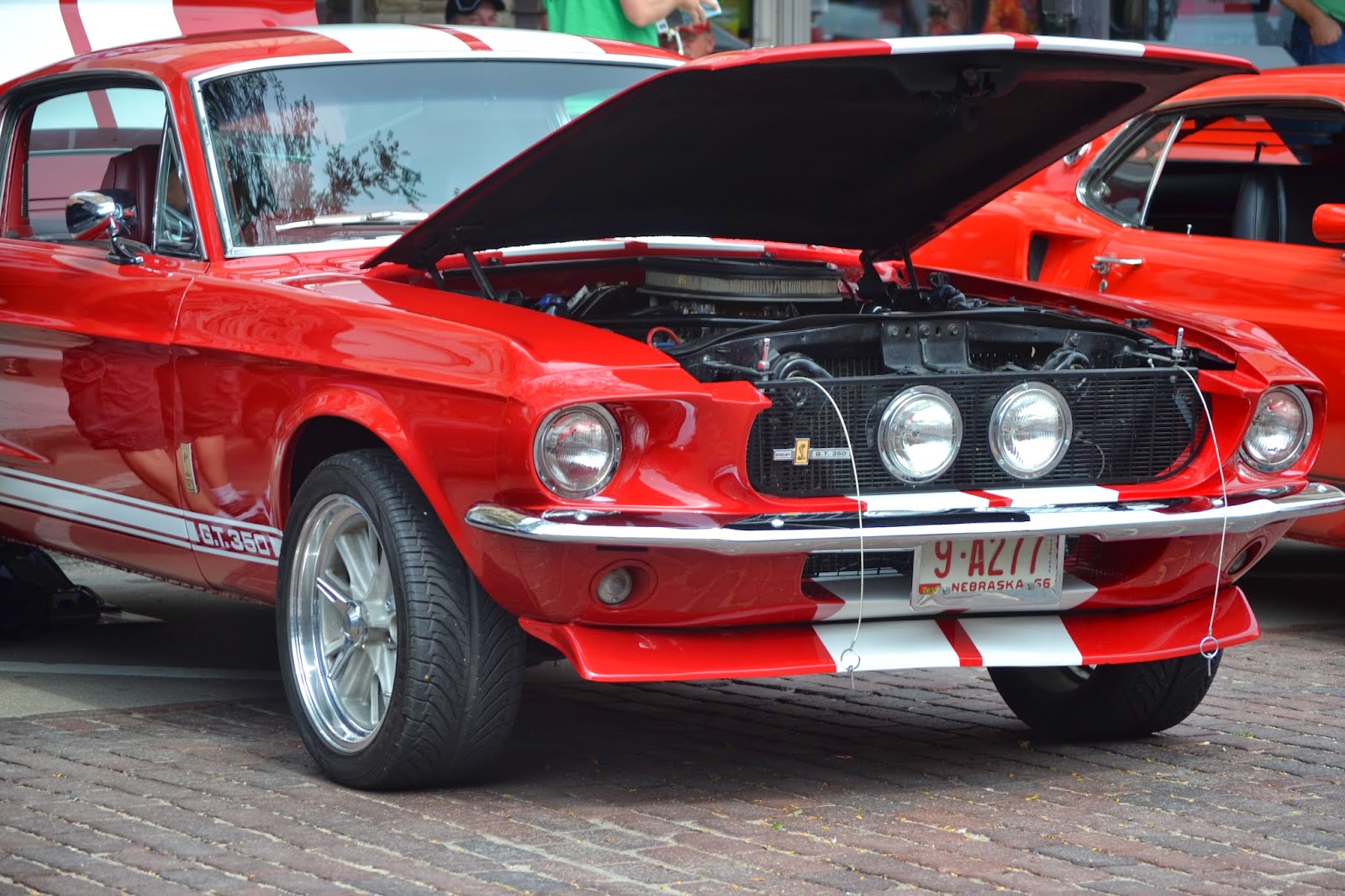by Nancy McCammon-Hansen
America has had a love affair with the automobile for a long
time. Mine began in the summer of 1970 when I won a bet with my father. He said
if I got a college scholarship, he’d buy me a car. My scholarship was the first
announced on graduation night. So he had to pay up.
And pay up he did when he found a 1964 ½ Mustang Fastback.
What a car!
The Mustang turns 50 this year and for those of us in the
Boomer generation, there is no car that better defines our generation.
 |
| A Mustang has always been part of the "logo" of the car. |
 |
| An older version... |
 |
| And an older gas cap. |
The Mustang debuted on April 17, 1964—with a new look that
encompassed a long front end, short rear deck, bucket seats and a floor
shifter.
It was sporty….but your mom would drive it.
It was fun…who doesn’t secretly want to own a sports car at
least once in their life?
It was reasonably practical….mine had fold down rear seats
that I could hide textbooks under with enough cargo room to move what little I
owned.
And it was affordable.
 |
| My '64 1/2 was this color. |
According to Car and Driver, it was “easily the best thing
to come out of Detroit since the 1932 V-8 Model B roadster”. The economy in
1964 was doing well, the challenges of 1968 hadn’t come to fruition as yet, the
first of the “Boomers” were young adults and the youth movement was born. It
was time for the Mustang Generation.
Ford pulled out all the stops when it came to publicity and
the media bit. Lee Iacocca’s pet project made Time and Newsweek’s covers at the
same time.
The Mustang broke Detroit records for first year new model
sales—Ford had the previous record too…with the Falcon (remember those?). The
one millionth Mustang was sold in March, 1966 and the two millionth in 1968.
The hype wore off by 1973 when the Mustang II began
production. (I stopped owning Mustangs with my 1972—the second best of the
three I had, the 1969 one being a little too boxy to be as cool as the other
two.) But in 1964 and 1965, the public couldn’t get enough. Someone even sent
Henry Ford II a telegram:
Henry Ford, I do declare
You have your Grandpa Henry’s flair
He put a Ford in every home.
You put a Mustang there.
Congratulations.
The wait out here is somewhat sickly;
Could you fix me up more quickly?
Lee Iacocca was betting that the Mustang would far outpace
the Falcon’s record for first year sales and he was right to do so. On April
17, 1965, Mustangs had outsold Falcons by 1,638 in their first year—that’s
418,812 “ponies” on the road.
The base price for a Fastback in the fall of 1964 was
$2,553.00—not bad for a new car at that time. Since my Fastback was six years
old, it was a lot less because cars didn’t retain their value the way they do
now—nor did people keep them as long. (I’ve had my bright red Ford Focus for 12
years and I don’t even have 80,000 miles on it yet—plus it’s paid for and takes
only about two tanks of gas a month. What’s not to like?)
In May, 1964, the Mustang set the pace at the Indy 500. A
whopping 105 pace car replicas were given to the top selling dealerships in the
nation. Indy winner A.J. Foyt got to take a pace car home. The Mustang has “paced”
the Indy 500 every 15 years and each time it is a totally new model.
Ford also was out ahead of other car manufacturers when they
began targeting young women with their advertising in 1966. The six cylinder
car was promoted with the headline “Six and the Single Girl” but other ads
targeted different audiences and the wide appeal kept sales high.
In April 1964, Ford ran a series of prime-time television
ads that were preceded by magazine ads, announcing, “The most exciting thing on
TV tonight will be a commercial”. They also had lobby displays in Holiday Inns
and premiered the Mustang to the press corps on the observation platform of the
Empire State Building prior to the New York World’s Fair.
Chevrolet, not to be outdone by the Mustang, introduced the
Camaro in 1967 as well as the Z28. American Motors soon followed with the
Javelin and Pontiac the Firebird. The Trans Am then hit the road too. What Ford
was thinking with the Mustang II I will never know, although the books I used
for research indicated that after Carroll Shelby got involved with the Mustang,
creating the “Cobra”, Iacocca thought they needed to return to a car closer to
the original concept so as not to lose the wide audience the Mustang had
garnered.
But life was never the same for those of us who loved the
early Mustangs.
This summer I took a number of photos of old Mustangs at
Cruise Weekend in Kearney, NE., my hometown. Cruise Weekend is a HUGE event,
and if you’re an old car lover, I’d encourage to hop on I-80 and venture west
next July. You’ll be glad you did. If you can’t make it to Nebraska, you can
always go to Auburn.
Wherever you go when there are old cars around, you are SURE
to have a great time…because that’s what a “blast from the past” is all about!
Sources for this blog were:
“Mustang 1964 ½ to 1973” by Mike Mueller, MBI Publishing
Company, 2000
“Mustang The Affordable Sportscar” by John A. Gunnell,
Krause Publications, 1994
“Mustang Selling the Legend” by Bob McClurg and Andy
Willsheer, Motorbooks International 1997













No comments:
Post a Comment